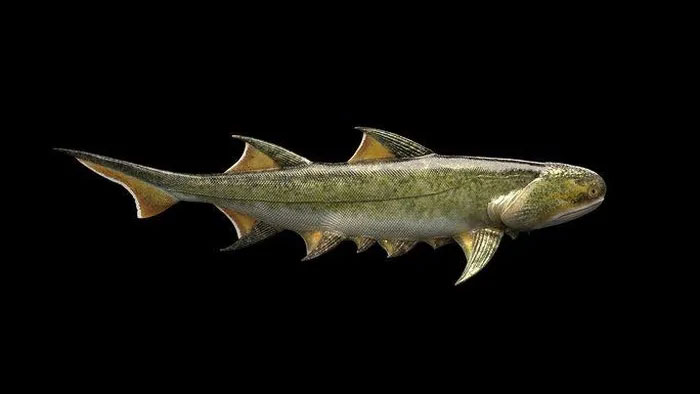Scientists confirm that the shark, resembling a monster with an armored body and sharp spines, recently discovered in Guizhou, China, is the oldest known ancestor of humans.
A study recently published in the scientific journal Nature describes a completely new species belonging to the acanthodian group, an ancient lineage of jawed fish that emerged tens of millions of years before the world entered the “Age of Fish” around 420 million years ago.

Portrait of our 455 million-year-old “monster” ancestor – (Photo: Zhang Heming)
Acanthodians are the oldest recorded group of jawed fish and are common ancestors of many species, including modern sharks that bear a resemblance to them, along with countless other jawed animals, including humans, according to the research team from the Chinese Academy of Sciences, Guizhou Normal University, and the University of Birmingham, UK.
According to PHYS, the new species has been named Fanjingshania after the site where it was excavated – Fanjingshan Mountain, which is rich in natural resources, particularly a diverse range of ancient to modern fauna. The specimen was uncovered from the Longxi Formation in Shiqian County, Guizhou, China.
The body of Fanjingshania resembles that of modern sharks but features a more fearsome appearance, with a sturdy armored layer and sharp spines, making it akin to a “monster” version of a shark.
This specimen is estimated to be around 455 million years old, based on morphological comparisons with several related species from the same period. Thus, it belongs to the Ordovician period.
This “monster” shark also retains many characteristics of an “unfinished” evolutionary process, transitioning from older species to a jawed state. Its bones also provide evidence of a process of bone resorption and regeneration that began to develop in both its bones and later species, including humans, which did not exist in earlier cartilaginous fish.
The new discovery marks an important milestone in understanding when Earth’s organisms evolved from jawless species with “rigid” skeletons to jawed animals with more flexible skeletons, helping scientists better assess the rate of evolution over time and gain a clearer understanding of how the earliest species transformed.
Professor Zhu Min from the Chinese Academy of Sciences emphasized that this is the oldest known jawed fish with detailed anatomy. The fossilized remains of Fanjingshania are also in good condition, providing many fascinating details.


















































